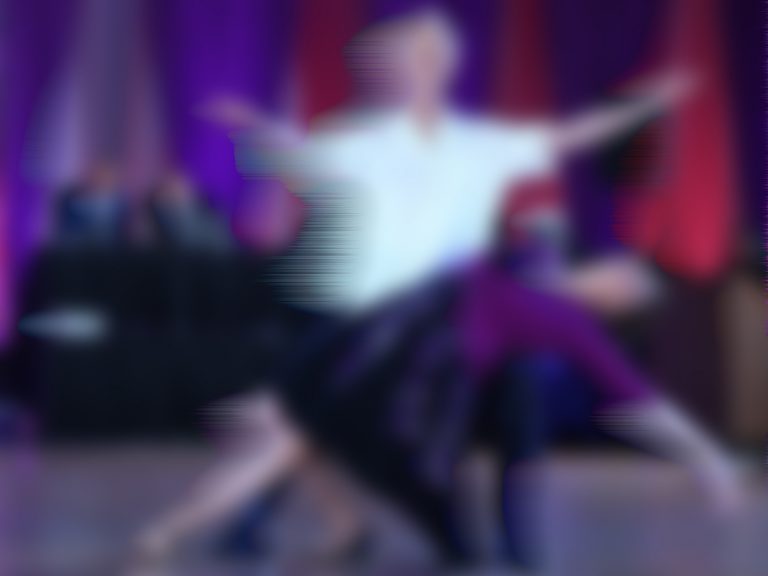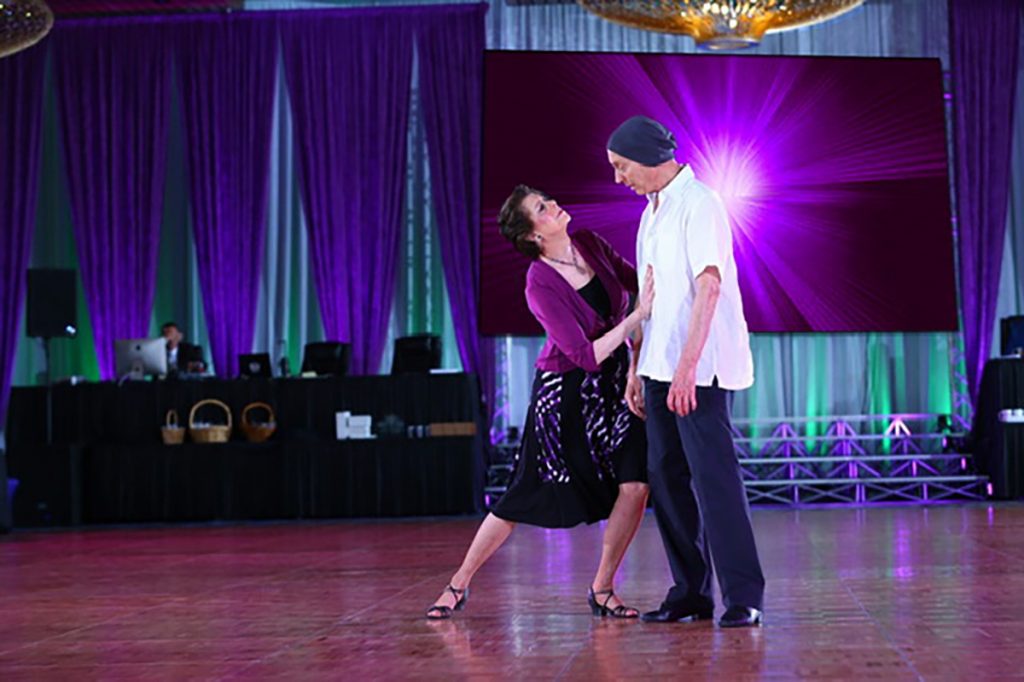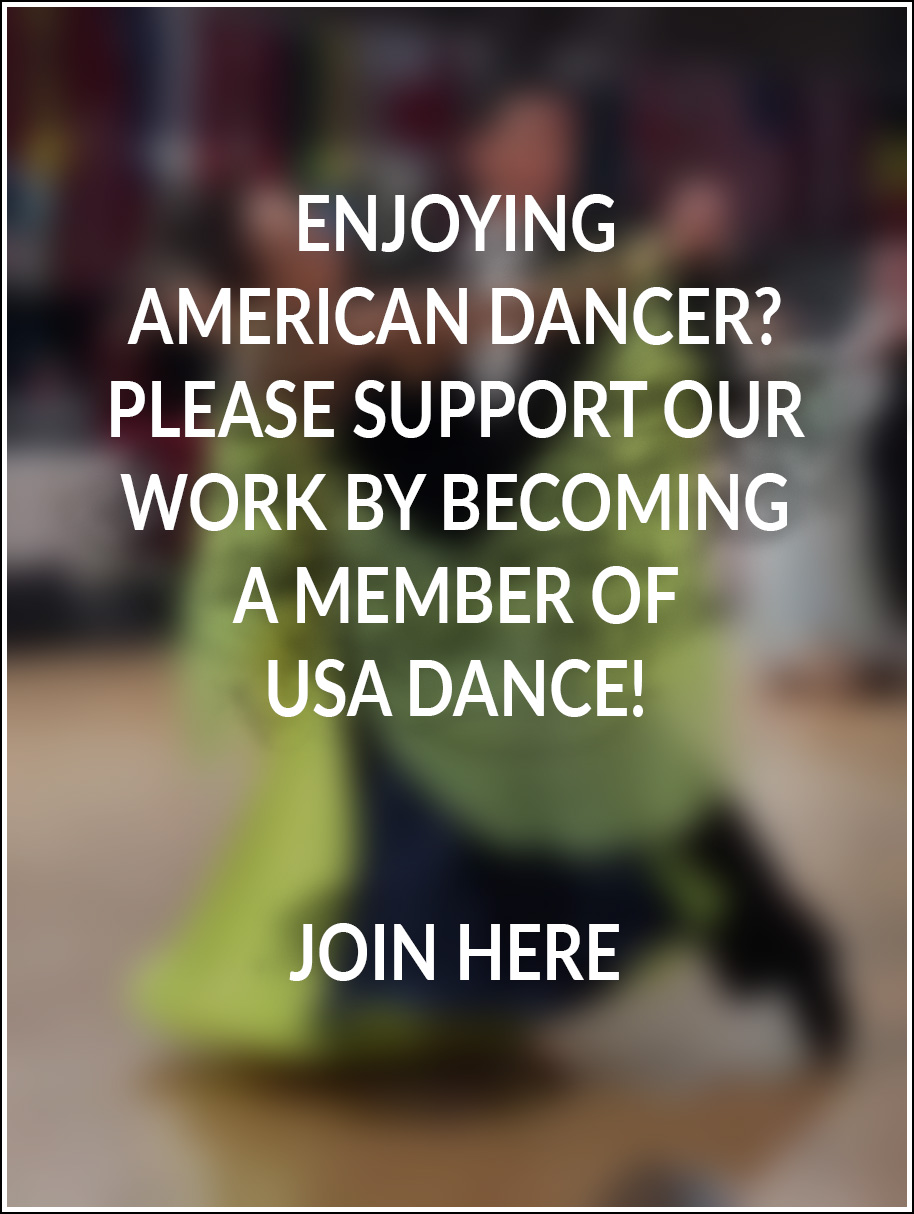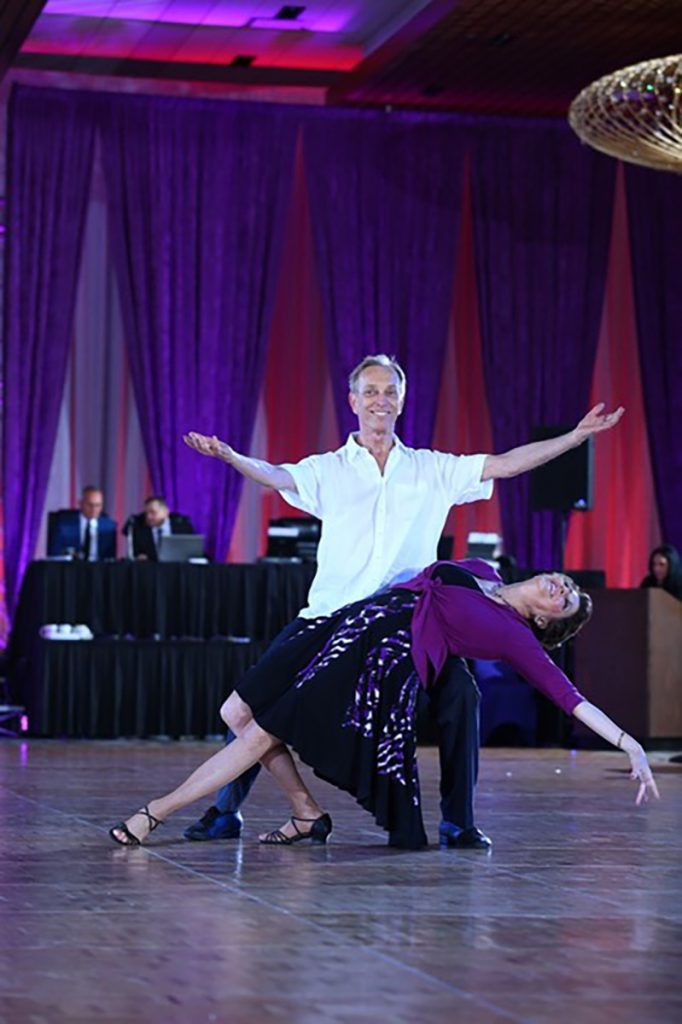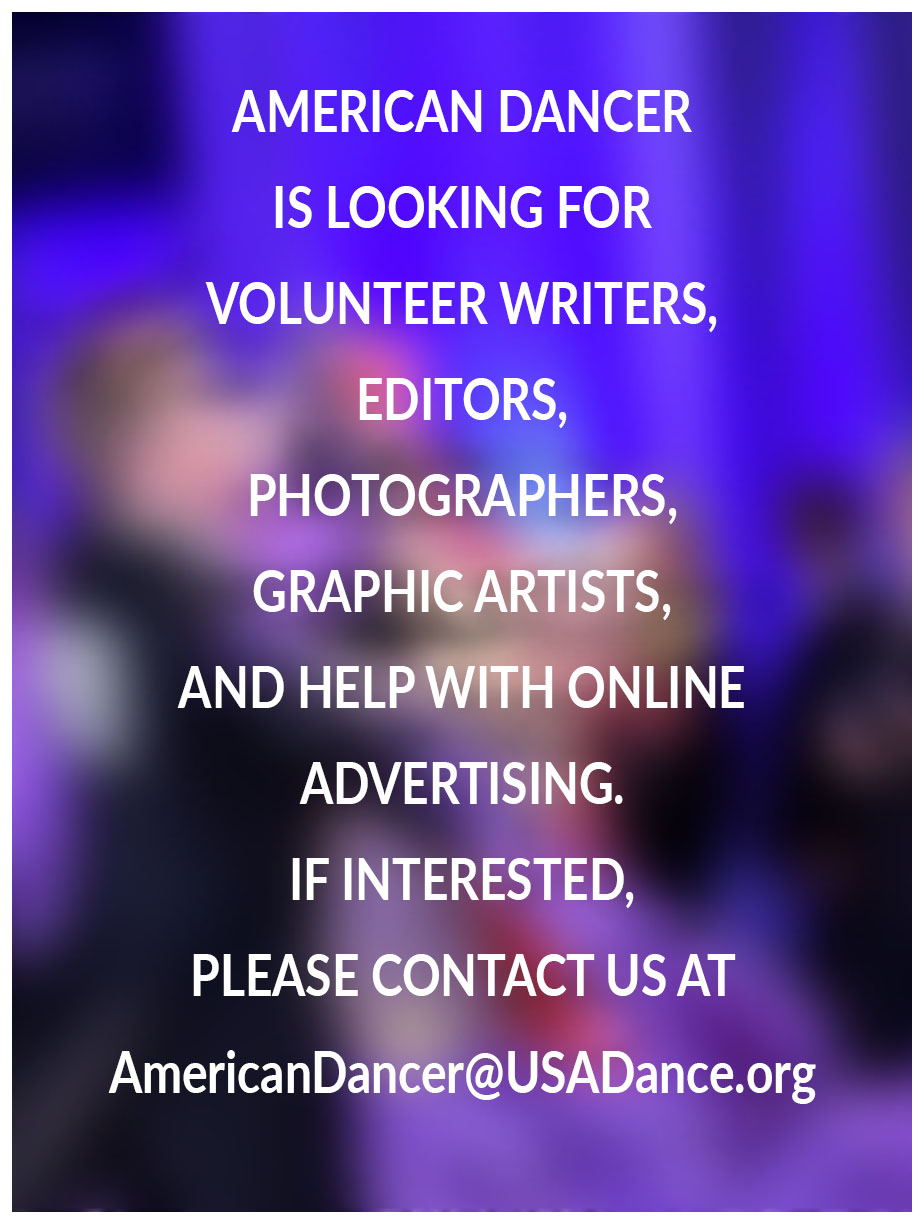Dennis Yelkin felt broken. He had been nauseated for six weeks after receiving a powerful chemo blast to treat his multiple myeloma, in June 2018. His life was on hold; his world was small. He lay in bed. One more breath. Don’t throw up. He was back to his “loner” days as a teen and young adult. “When I’m sick, I am my own best caregiver. I don’t need anyone. Visitors are an intrusion to my privacy.” All alone, but for his life partner, Jim.
I was one of few visitors Dennis allowed. As his social dance partner, I did my best to provide support. I could hardly know what Dennis was going through. Mostly, we talked about our longing to dance again.
That would not happen until months later, at our December Social Dance Club black-tie dinner. “I was so happy I could dance again and see people. Life was going to be OK,” Dennis said. “I was getting my appetite back. Could I even do it? I think muscle memory took over; so many things to think about—dance steps, rhythm, synchronizations, they happen quicker than you can think. There are constant impulses and strategies. It is wonderful mind-body therapy. I craved the physical contact. I missed it so much.”
Dennis wore his wool tuxedo that hung loosely on his thin frame. He wore his grey knit chemo hat. We celebrated as we danced waltz and rumba to live music, and our friends welcomed him back. At my urging, he asked my college friend Barbara Peterson Burwell (a former Miss USA) to dance. They looked elegant together. Dennis was back, at least physically. Dennis didn’t know that Barbara’s husband battled multiple myeloma before he died, or that Barbara was a cancer survivor herself.
As Dennis recalled: “I casually told Barbara I was warm in my wool tux and cancer cap to cover my peach fuzz. ‘Why don’t you take the cap off?’ she asked. ‘Ohhhh, I’d be embarrassed,’ I said. ‘Why would you be embarrassed? You are among friends.’ I realized at that moment that I was among friends, and I would be more comfortable being my true self, which was peach-fuzz head.
“I took off my hat. Such relief! My head was sweating. I focused on dancing with Barbara; I wanted to make her look good. People told me I looked great. They told me I had a nice-shaped head. That night was the beginning of my real recovery…my emotional recovery. I felt new energy. I got so much positive feedback that it gave me confidence. It was just a relief to not have that damn hat on around other people. OK, I can do this. People are fine with it.”

In the coming days, I saw the transformation first-hand in Dennis. As he gained strength, I suggested we do something new — create a dance routine to track our journey together through Dennis’ painful health challenge. He was hesitant at first. We asked dance professional Scott Anderson to choreograph it. Scott’s wife, Amy, selected Carole King’s “You’ve Got a Friend” as a musical message from me. “Because of our long working relationships, we were candid with each other if something didn’t work,” said Dennis. “In the end, the process of creating that routine was the best therapy I could have had.”
The routine evolved over a year. It starts with a depressed Dennis in his chemo cap. “When I stooped over at the beginning of the routine, it was authentic,” recalled Dennis. “I felt broken, even though my lab numbers were getting better. Scott, in his genius, helped me portray how I felt after that cancer blast.”
As for me, I learned ways to visibly encourage Dennis back to dance, even lifting his arm onto my shoulder to partner. We both knew what came next — I needed to remove his cap to free him. “When you pulled my cancer cap off during the routine, I had a visceral gut reaction, because that hat is what I was hiding behind,” admitted Dennis. “I didn’t want to talk to people about my health; yet I was wearing the emblem of cancer. I hated that hat, but it was my security blanket. So, when I desperately reached out for that hat during our routine, it was from the gut.”
From there, joy emerges, and Dennis grows stronger. He dips me, we celebrate. He lifts me. What? When Scott suggested a lift, I wasn’t so sure. While Dennis is also a trained improvisation dancer, he was now 74 years old, weighed 150 pounds, and was still recovering from cancer! I was a few years younger and not exactly petite. We were solid mid-level competitive dancers, but certainly not dance champions. A lift?
The courage Dennis had! Sure, there was a fall along the way in an early performance. But with Scott’s help, we found a lift that worked. “When I lifted you up and spun you around—I’m celebrating!” exclaimed Dennis. “I’m flying! It’s a big…YES!”
We kept at it. As Dennis shared, “Very often during rehearsals we both got teary-eyed because it brought back memories of when I was so sick. It was difficult to demonstrate to Scott or others how vulnerable I was. When I was sick, I thought I didn’t need anyone. But during this routine, I realized that I DID need other people’s help, and that’s one reason I got emotional. I realized how much I needed other people — something I never admitted to myself.
“A person can go to a private therapist or group therapy, but to visually and viscerally be able to tell our story was the type of therapy, and healing, that I needed. I didn’t want to go around talking to everybody. I was able to physically express what I felt. Who gets to do this if they’re not in the dance world? Dancing is such a significant and powerful way to tell a story that words could never express.”
Dennis was declared in remission in September 2019. By coincidence, a competition organizer Donna Edelstein, herself a recent cancer survivor, was creating a special focus for January 2020 competitors. The focus was “Cancer Conquerors,” and she invited us to showcase our routine the final evening.
We danced with everything we had. The performance was our best. “We reacted to each other’s emotions authentically,” said Dennis. “They were real. That’s what the audience felt. I never danced anything like that before.”
Nor had I. It felt good. We fed off each other in our friendship and bond of over 28 years. As one judge critiqued, “I can see, it’s being danced from the soul.” From another: “Such a powerfully emotional solo. Thank you.”
Dennis, the self-described loner in his early years, was his authentic adult self — a connector. That night he connected hearts with strangers and love with friends. So many friends. He inspired other cancer survivors. Some rose to their feet.
It is about the healing power of dance. The greatest therapy of all.
The contributor
Ember Reichgott Junge and Dennis Yelkin are members of USA Dance Minnesota Chapter #2011. Ember seeks inspirational stories at ember.reichgott@gmail.com for her book-in-progress, “Stories of Resilience from the Ballroom Dancer’s Heart.”

